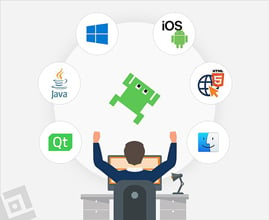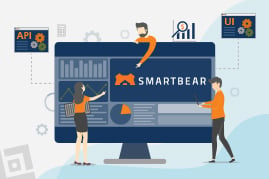Here at QASource HQ, we consider ourselves very lucky to work with over 700 incredibly talented engineers as well as some of the best testing tools on the market. Because we work with different clients in different industries on a wide variety of projects, every project setup varies.
QASource Blog
In our blog, we take a deep dive into the latest QA strategies, methodologies, and industry best practices driving the world of quality assurance. Follow our blog to get new ideas as to how to effectively deliver high-quality, bug-free software products, websites, and applications, while keeping costs low.

QASource
Recent Posts
Any application which is based on client-server architecture needs to be load tested even if it is a desktop application. Through this expert series, we are sharing information that can help in load-testing desktop applications.
QASource recently presented the webinar, "Get The Best Test Automation ROI Through Continuous Testing With SoapUI Pro And TestComplete" with its partner, SmartBear. In this webinar, Anand Ramakrishnan, QA Director at QASource, highlights the challenges with test automation prior to using SoapUI Pro & TestComplete, how these tools helped overcome these challenges, best practices and value added features with these test automation tools, and who should consider using SoapUI Pro and TestComplete.
Teams exist in every organization. They discuss tasks that need to be completed, who will be given ownership of each task, and then they are off and running. Cross-team collaboration brings members with different areas of expertise, knowledge and experience together, which can improve quality, speed and the company's overall productivity. Cross-team collaboration is a much-needed skill that is, unfortunately, difficult to acquire. So, how can companies build effective cross-functional teams?
Collaboration software are crucial in today's interconnected and globalized society. In order to make their software even more beneficial to users, companies are allowing third-party applications to integrate with their collaboration software. Though this is very useful, there are common challenges that can arise when integrating third party apps. Check out QASource’s latest infographic below to read our expert engineer's tips on how to solve the 3 most common obstacles companies face when integrating third-party applications with their collaboration software:
As separate development and QA teams merge together to form larger DevOps teams, the Agile process is getting more play than ever. Working in an agile way encourages teams to iterate in parallel-to test code as it’s written, so as to uncover any major problems earlier on in the software development lifecycle. The Agile process was an answer to the slow, outdated Waterfall method, in which products were developed in fits and starts, with various delays and blockages slowing the entire process down.
Software development has been in existence for quite a long time now. However, the need for strong QA to complement the advancements of development has risen. With the increasing demand for high-quality products, it has become imperative for software companies to have strong QA in order to achieve development excellence.
In this expert series, we bring you the concepts related to chatbot trends, Chatbot types, and Chatbot testing standpoints so that you can have a good understanding.
Mobile adoption trends change, just like the seasons in a year. The comparison statistics in this expert series will be helpful in devising the device-testing matrix for planning the release of their products across the globe.
Written by QA Experts
QASource Blog, for executives and engineers, shares QA strategies, methodologies, and new ideas to inform and help effectively deliver quality products, websites and applications.
Categories
Authors
Our bloggers are the test management experts at QASource. They are executives, QA managers, team leads, and testing practitioners. Their combined experience exceeds 100 years and they know how to optimize QA efforts in a variety of industries, domains, tools, and technologies.








